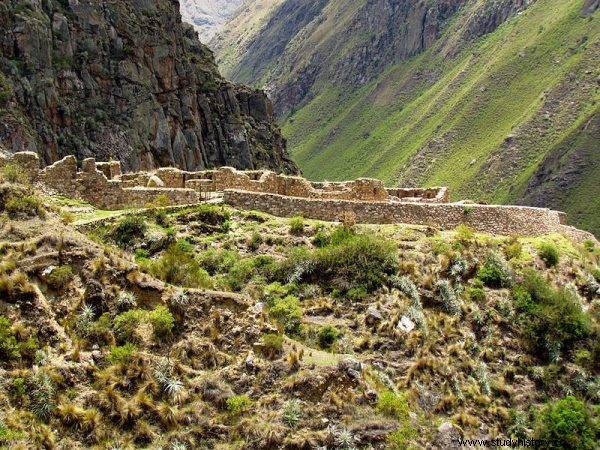Some ancient Inca rituals were very cruel. Children often served as victims. According to the latest research, the little Incas selected for the rites were intoxicated. This is proven by nail and hair tests.
Hallucinogenic plants and psychotropic stimulants were at the heart of the beliefs, rituals, and practices of divination in the ancient Andes. The Inca Empire, one of the largest in pre-Columbian America, was no exception.
According to a new study published in the Journal of Archaeological Science, Inca children selected for Capacocha, a ritual sacrifice to regain the favors of the spirits, were intoxicated for several weeks that they may remain calm in the face of certain death. The ceremony itself was cruel. The sacrifices were made in various ways:asphyxiation, blow on the head or burial alive. Sometimes the children were also placed in such a way that they would be struck by lightning.
Polish contribution
At the heart of the Inca Empire, which was one of the major Andean civilizations in the 15th and 16th centuries, human sacrifice was common. The rites were to celebrate important events such as the birth of a king or victory in battles or wars. On the other hand, as previous studies have shown, Capacocha was also a practice used by priests wishing to control the population for fear of divine punishment.

One of the mummies found in Llullaillaco
For this study, scientists conducted toxicological analyzes of the remains of two children sacrificed at such ceremonies. What is most interesting, Poles - Dagmara Socha from the Center for Andean Studies of the University of Warsaw, Marzena Sykutera from the Faculty of Forensic Medicine at the Nicolaus Copernicus University Collegium Medicum together with colleagues.
Reducing the depressive states of victims
Two children, six or seven years old, were killed over 500 years ago on Mount Ampato in southern Peru. Using hair and nail samples, researchers found that during the last weeks of their lives, victims regularly chewed on coca leaves and became intoxicated with Ayahuasca, a hallucinogenic drink that researchers suspect was used to "reduce anxiety and depression in victims."

At the heart of the Inca Empire, which was one of the major Andean civilizations in the 15th and 16th centuries, human sacrifice was common
According to researchers, it is quite possible that the children knew about their fate weeks in advance. They also probably did not "volunteer" for this task. The authors wrote:
"In modern medicine, Ayahuasca is beginning to be used to treat depression. The Incas may have deliberately used its antidepressant properties to reduce fear in the victims. ”
The Incas may have deliberately used the anti-depressant properties of Banisteriopsis caapi (a plant used to prepare the drink) to reduce the anxiety and depressive states of the victims.

Replica of the Plomo mummy on display at the Museo Nacional de Historia Natural in Santiago, Chile
In another study published in 2013, researchers analyzed the diet of a thirteen-year-old Inca girl who - more than five centuries ago - was also ritually sacrificed in the mountainous region of today's Argentina. They found that she consumed a substantial amount of coca as well as alcohol . According to the researchers, consumption of these substances increased six months before their sacrifice, possibly at some ceremony important to the Incas.
Sources:
- wac // az, Before sacrificing the children, they were administering hallucinogens to them. New Facts About A Macabre Ritual , in:https://tvn24.pl/ciekawostki/inkowie-rytual-capacocha-zanim-dzieci-zostaly-zlozone-w-ofierze-podawano-im-srodki-halucynogenne-okarcie-polskich-naukowcow-5736347 [accessed:09.06 .2022]
- A. Kowal, The Incas used anti-depressants, but the backstage was really scary , in:https://www.focus.pl/artykul/inkowie-wybiorywali-antydepresanty-ale-nie-tak-jak-mogloby-sie-wydawac [accessed:09/06/2022]
- Journal of Archaeological Science
